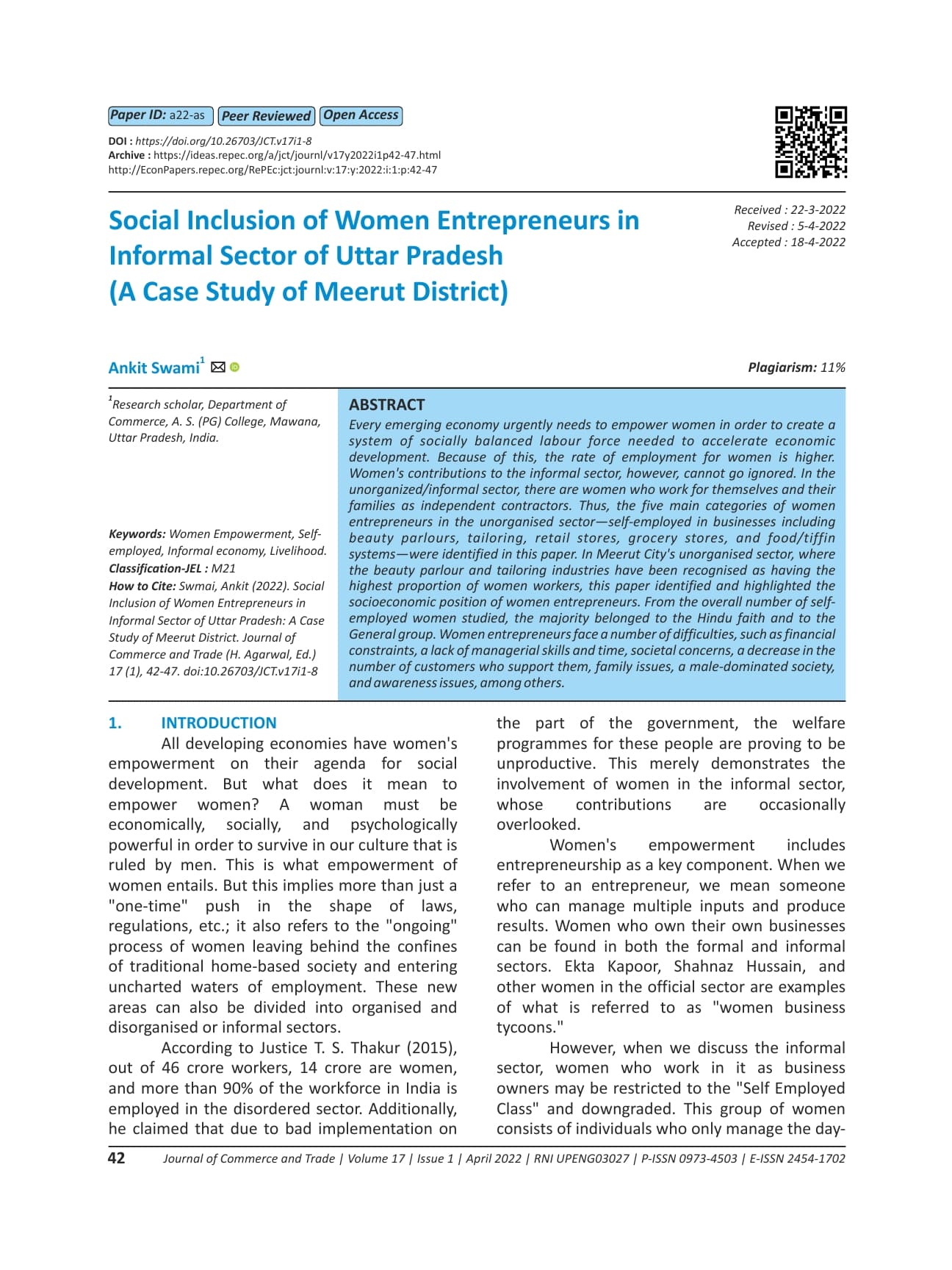Social Inclusion of Women Entrepreneurs in Informal Sector of Uttar Pradesh
A Case Study of Meerut District
DOI:
https://doi.org/10.26703/JCT.v17i1-8Keywords:
Women Empowerment, Self-employed, Informal economy, LivelihoodAbstract
Every emerging economy urgently needs to empower women in order to create a system of socially balanced labour force needed to accelerate economic development. Because of this, the rate of employment for women is higher. Women's contributions to the informal sector, however, cannot go ignored. In the unorganized/informal sector, there are women who work for themselves and their families as independent contractors. Thus, the five main categories of women entrepreneurs in the unorganised sector—self-employed in businesses including beauty parlours, tailoring, retail stores, grocery stores, and food/tiffin systems—were identified in this paper. In Meerut City's unorganised sector, where the beauty parlour and tailoring industries have been recognised as having the highest proportion of women workers, this paper identified and highlighted the socioeconomic position of women entrepreneurs. From the overall number of self-employed women studied, the majority belonged to the Hindu faith and to the General group. Women entrepreneurs face a number of difficulties, such as financial constraints, a lack of managerial skills and time, societal concerns, a decrease in the number of customers who support them, family issues, a male-dominated society, and awareness issues, among others.
Downloads
References
District Wise Development Indicators, Uttar Pradesh (2015). Economics and Statistics Division, State Planning Institute, Uttar Pradesh.
Geetika, Dr.; Singh, Dr. Tripti; Gupta, Anvita. (2011). Women Working in Informal Sector in India: A Saga of Lopsided Utilization of Human Capital. IPEDR. 4, pp. 534-538. Singapore: IACSIT Press.
Meerut City Census (2011). Published by Census of India, 2011.
Manju (2017). Women in unorganized sector - Problems & issues in India. International Journal of Applied Research, 3(4), 829-832.
Mohapatra, K. K. (2012). Women Workers in Informal Sector in India: Understanding the Occupational Vulnerability. International Journal of Humanities and Social Science , 2(21), 197-207.
Parveen, S. (2014). Causes of Women Labour and Earning in Urban Informal Sector: A Case Study of Aligarh City. International Journal of Interdisciplinary and Multidisciplinary Studies (IJIMS), 2(1), 52-61.
Sharma, K. (2012). Role of Women in Informal Sector in India. IOSR Journal of Humanities and Social Science
(JHSS), 4(1), 29-36.
Sharma, Priyanka (2013). Women Entrepreneurship in India, Global Journal of Management and Business Studies, ISSN-2248-9878, 3(4), 371-376.
Thakur, T.S. (2015). Workforce in unorganized sector. Published by Express News Service, Chandigarh on 12th April 2015.

Downloads
Published
Issue
Section
License
Copyright (c) 2022 Ankit Swami

This work is licensed under a Creative Commons Attribution 4.0 International License.










